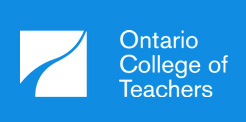Should My Child Take Academic or Applied Courses?

Ah, it's the famous parental dilemma: should my child take academic or applied? Many of you weigh the pros and cons of each option, while others (perhaps the more paranoid bunch), spend hours trying to clarify the difference. First of all, let me just say, there's no need to panic; this process does not mean your kids are signing their lives away. Once they choose a course, they can always change their minds. So let's put our worries at ease and learn more about how the whole process works!
What is the difference between academic and applied?
The Ontario curriculum outlines the difference between academic and applied, but let's be honest, it's full of confusing jargon. So instead, let's just keep things simple! But before we look at the difference between academic and applied, let's learn about the two options individually.
What is applied?
Concrete learning approach
In applied, students are learning through hands-on activities, straight-forward ideas and concrete reasoning. This means the concepts are taught using basic facts and clear definitions, not fancy theories that are hard to apply in real life.
In turn, there's less focus on complicated high-order thinking skills such as analyzing and interpreting. Or in other words, they're using concepts that require less steps to understand.
For example, instead of being asked a question with many possible answers such as, "why is the story interesting?", they may be asked a simpler question with fewer possible answers such as, "describe an interesting part of the story".
Learning at a slower pace
In applied English, students learn through a more gradual step-by-step approach. This slow pace allows students to spend more time reviewing their skills and knowledge, letting them master each stage before moving onto something new. This pace also gives students confidence as they move forward in the course.
What is academic?
Abstract learning approach
In academic, students are learning through a more advanced thinking style known as abstract reasoning. This means they learn by engaging with information in a more analytical way, using skills such as making connections or using deduction to arrive at an idea. This process is known as critical thinking. Here, students take concepts a step further, which requires more steps to draw an answer.
For example, during a book report, they may be asked to describe the lesson of the story, but with an added challenge, they must also explain WHY this lesson is important in life. The first part of the question is easier because you only need to retell the story's facts. The latter question is more difficult to answer because it forces you to think through many steps to answer "why?".
Still don't understand? Look at it this way: To answer the question, you must start at the basic thinking level. You will uncover the story's lesson. Next, you must consider how this lesson applies to real life. At this point, you're making connections between the story's lesson and the world. Next, you must evaluate the real-life example to decide how well it shows the story's lesson. Finally, you'll analyze and judge the example to determine why it's important.
A lot of steps, right? For some people, this multi-step thinking comes easily. But for others, especially those with learning disabilities, it's a struggle and for this reason, they would be better suited to take applied.
Learning at a faster pace
Academic courses flow at a faster rate than applied. Since these students are able to process concepts more quickly, they can progress to the next lesson more readily. Moreover, the students have more advanced learning skills such as organization and self-regulation, allowing them to progress when learning at an accelerated rate.
.
Pros and cons of academic and applied
Now that you understand the difference between academic and applied courses, let's weigh out the pros and cons of both options.
Pros of applied
- Lessons and assignments cater to special learning needs
- Students with learning difficulties can feel more confident, resulting in higher achievement
- Students can collaborate with students at a similar level
- The slower pace of teaching is more suitable for students with ADD
Cons of applied
- Applied courses in grade 9 & 10 lead to college-destined courses in grade 11 & 12 which limits their post-secondary options
- Students may feel sidelined from their peers taking academic courses
- Students are more pampered which does not offer a realistic preparation for their futures
Pros of academic
- Academic courses in grade 9 & 10 lead to university-destined courses in grade 11 & 12 which increases their post-secondary options
- Students will be challenged to think more critically
- Students will be encouraged to develop independent learning skills to better prepare them in the future
- The faster pace of learning will keep students challenged and engaged
Cons of academic
- For students with learning difficulties, academic may feel too overwhelming, resulting in low achievement
- Lessons may be too fast-paced for students with ADD
You can switch back and fourth
Who doesn't love the flexibility of take-backs? Fortunately, choosing between academic and applied doesn't have to be final. Once a student chooses a pathway, either the route of academic or applied, they can always change directions-- phew, right?
We'll go through each scenario and the options that accompany them. First, we'll start with the selection process in grade 9.
Grade 9-10
Here's all you have to know: whether they choose academic or applied, they can still change their minds in grade 10. No problem!
Grade 10-11
Once the student reaches grade 11, they need to have the matching prerequisite courses from grade 10. This means that grade 10 applied leads to grade 11 College, while grade 10 academic leads to grade 11 University.
But don't worry-- there's still wiggle room to change your mind. A grade 10 student can take both the academic and applied course in the same year by taking one of each per semester. This way, they'll be caught up with the grade 10 academic prerequisite in order to proceed to grade 11 University if they choose.
Grade 11-12
Grade 12 courses require the matching grade 11 prerequisite courses. So, a student taking a grade 11 College course would proceed to take a grade 12 College course. If they want to change paths, they can use their spare or free period to take the grade 11 University course, so they can have the prerequisite to move on to a grade 12 University course.
The final option is summer school, which allows the student to take the grade 11 University prerequisite before the next school year begins.
If you have any other questions or comments, please post to the comment section below.
Leave a comment :)
Comments will be approved before showing up.
Also in Isyourkidlazy.com

Signs Your Child Is Over-Relying on ChatGPT for Learning
Worried your child is relying too much on ChatGPT? Learn key signs of AI overuse in learning, how it impacts real skill development, and what parents can do to guide smarter tech habits.

How ChatGPT in Education is Evolving
Discover how ChatGPT in education is changing learning—from personalized tutoring to smarter learning tools. Explore the impact of AI in classrooms and beyond.


Rachel Esco
Author